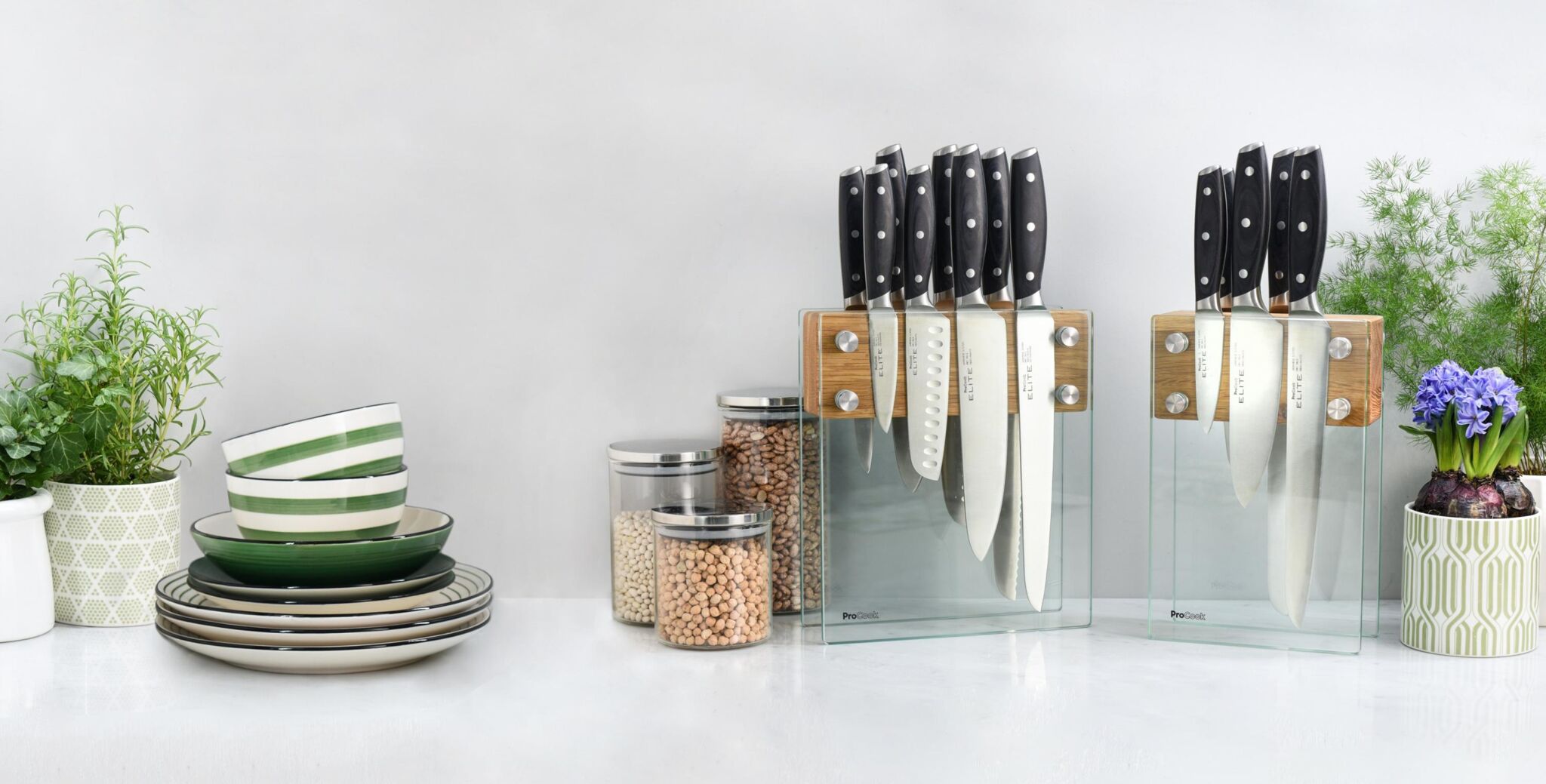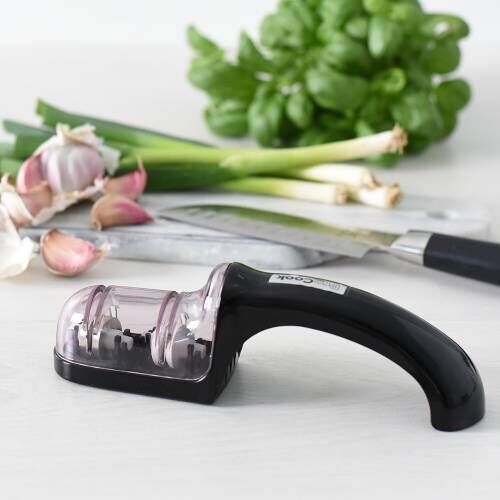ProCook Help Hub
The latest inspiration and advice from the experts at ProCook
Sharpening your kitchen knives is a necessity. Not only does a good, sharp edge make a kitchen knife safer to use, but it also improves the appearance of your food, streamlines food prep, and prolongs the lifespan of your knives. A dull kitchen knife makes slicing and dicing much harder and it puts your knife at risk of chipping.
There's a right way when it comes to sharpening your kitchen knives, from sharpening your knife to the correct angle to which whetstone grit is best. Whether you are a complete beginner or looking to refine your knife sharpening technique, our guide is here to offer advice on the best way to sharpen kitchen knives.
Why Should I Sharpen my Knife?
There are several reasons why it's important to keep your kitchen knives sharp. Not only does a properly sharpened knife make it easier for you to cut through food, but it also prevents the knife from slipping, making food preparation much safer. After all, a dull knife can encourage you to compensate for the lack of sharpness and add more pressure when cutting, increasing the risk of the knife slipping and causing an injury to yourself or others.
Furthermore, using an appropriately sharpened knife allows you to chop and cut with greater precision, and can enhance the presentation of your food. Certain recipes may demand finer precision, such as finely diced tomatoes for pasta sauces or thinly sliced or diced cloves of garlic for a subtle hint in your meals. Keeping your kitchen knife sharp can also reduce workload, as each action requires less physical effort to achieve the same result.
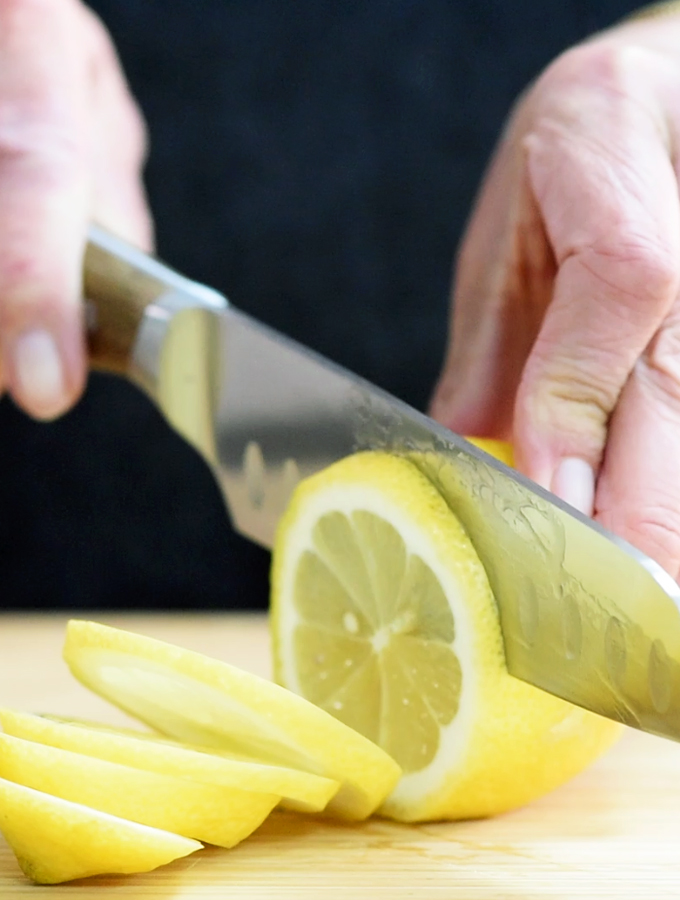
What Angle Should I Sharpen my Knife at?
The angle at which you sharpen your knife typically depends on the type of blade and whether it’s European or Asian. However, all ProCook knives are stone ground to the same angle, so keeping your ProCook knives nice and sharp is easier regardless of the knife range you’ve chosen.
Each manufacturer will have their own instructions, so always read their guidelines before sharpening. We recommend using a whetstone; however, our sharpening rods are also fantastic and can be used with many of our knives.
ProTip: If you are unsure of how to use a whetstone or what angle you should sharpen your knives to, all our staff members are professionally trained and can show you the best knife sharpening techniques in our stores.
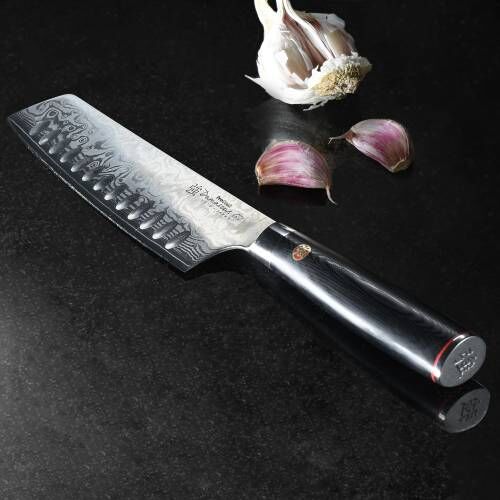
Our beautiful Damascus 67 Nakiri Knife, ideal for slicing, dicing and chopping hard vegetables.
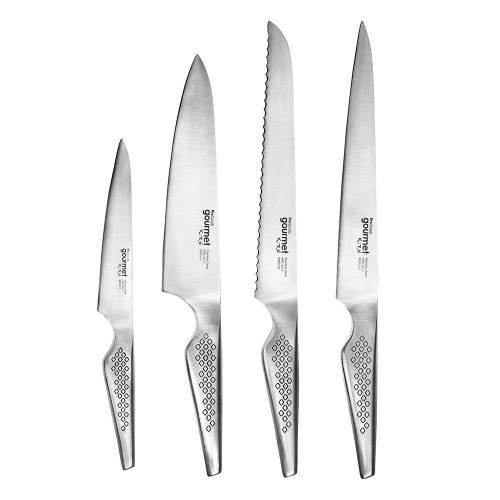
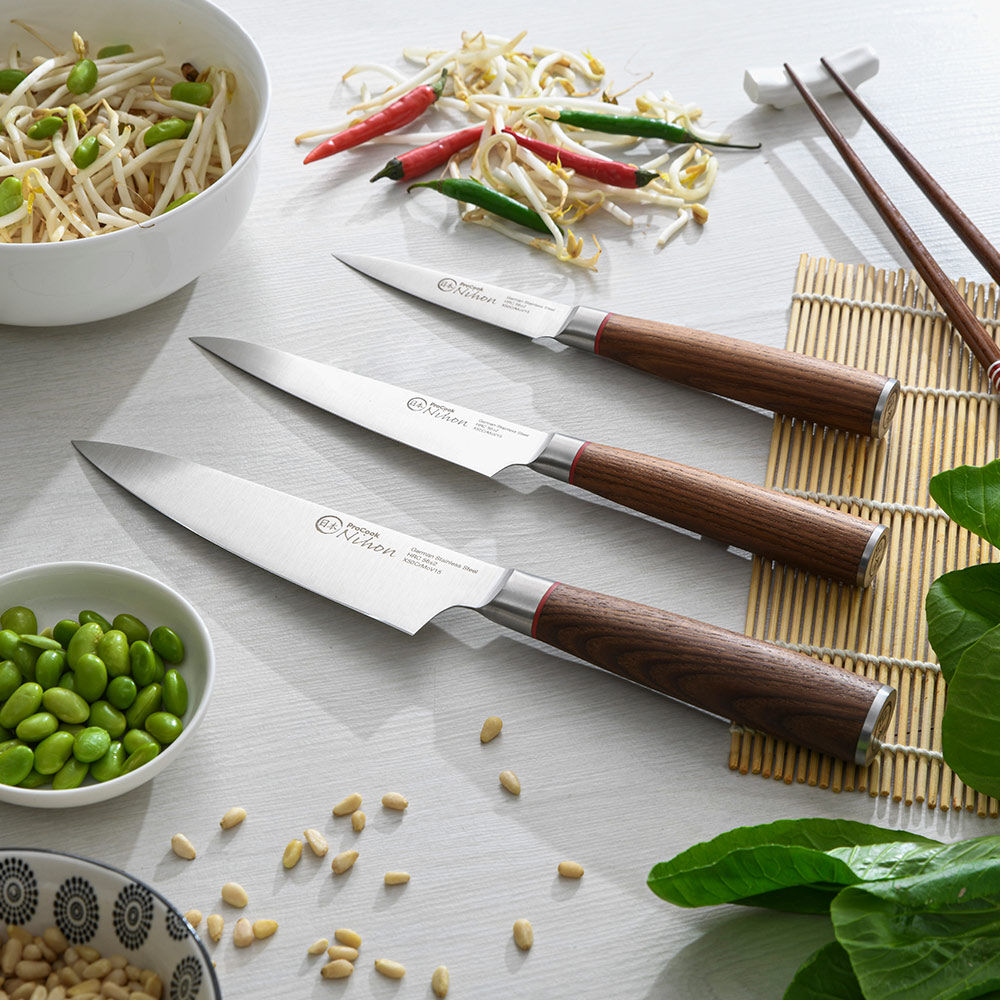
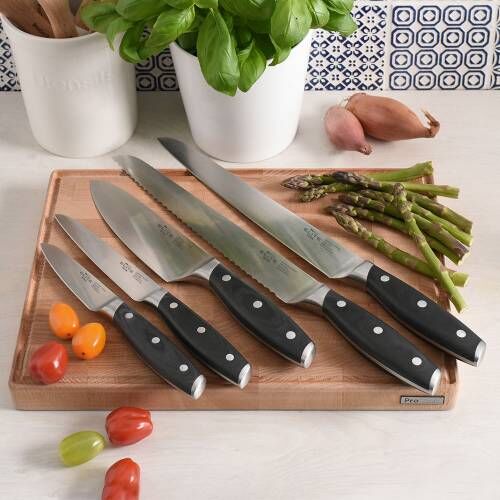
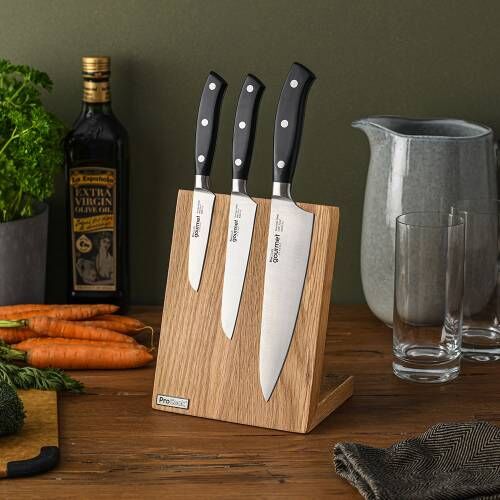
How to Use a Whetstone
For someone who has never sharpened their kitchen knives before or used a whetstone, you may not be familiar with the proper technique needed. However, with many tutorials out there and after a little practice, you will soon become accustomed to the proper knife sharpening procedure needed when using a whetstone.
Whetstones (sometimes referred to as sharpening stones) are one of the best ways to sharpen your kitchen knives, so learning the best knife sharpening techniques and how to use a whetstone properly can elongate the life of your kitchen knives, increasing their safety, effectiveness, and allow you to enhance the presentation of your food.
Different Types of Whetstones
Whetstones, also known as knife sharpening stones, come in a range of grits, with the number simply referring to the density of the particles and how the whetstone should be used. For repairing knives with chipped edges, a coarse grit whetstone with less than 1000 grit is typically used whereas a whetstone with a grit grade between 1000 to 3000 is best for sharpening dull and well-used knives. Finishing whetstones, or fine grit whetstones, have a grit grade of around 4000 to 8000 and are great for refining your knife's edge and polishing the surface.
What is a Whetstone?
A whetstone, also known as water stones and sharpening stones, is a fine-grained stone that's used for sharpening kitchen knives. You may also want to use a sharpening stone to sharpen other steel tools like scissors or chisels.
Due to the wide range of sharpening stones and water stones available, a combination whetstone with multiple grit levels can often prove to be the most versatile sharpening option to have in your kitchen.
Sharpening Your Knives with a Whetstone
ProTip: Our video below will show you the whetstone method in action.Start playing the video and expand for fullscreen.
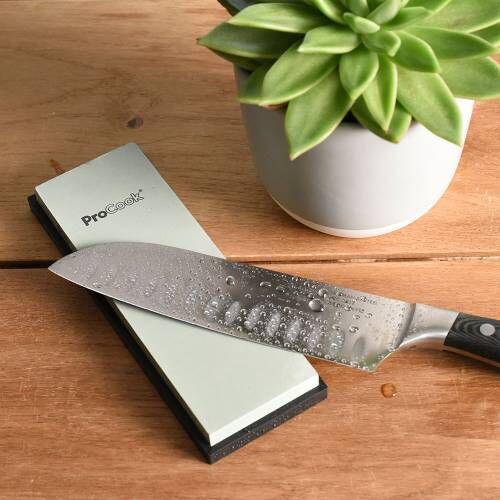
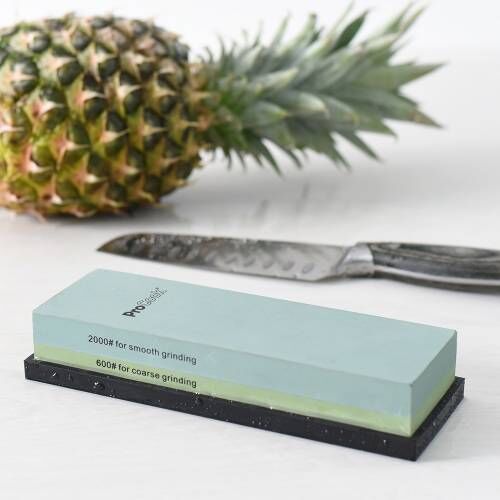
How to Use a Sharpening or Honing Steel
Sharpening or honing steel are great for honing your kitchen knives. While a honing steel does not sharpen your knife's edge to the same precision as a whetstone, it can hone (or finish) the cutting edge of a slightly dulled blade.
Here's our guide on how to use a sharpening or honing steel:
ProTip:
Try listening when using a honing steel. A harsh noise is omitted when you apply too much pressure. Rather, a quiet, ringing sound indicates that you are applying the correct pressure when honing.
* After sharpening or honing your knife, always clean thoroughly to remove any burr or microscopic particles that may have been picked up on the blade.

Choosing the Right Knife Sharpener for Your Kitchen Knives
Different manufacturers require certain knife sharpening techniques and levels of care. To help you sharpen our knife ranges, we've created this handy table.
| Range | Professional X50 Chef Sharpening Steel | Professional X50 Chef Diamond Sharpening Steel | Single Sided Whetstone 600 Grit | Double Sided Whetstone 600/2000 Grit | Designpro Knife Sharpener | Three Wheel Knife Sharpener Diamond and Ceramic | Ceramic Knife Sharpener | Twin Wheel Knife Sharpener Diamond and Ceramic | Electric Knife Sharpener |
|---|---|---|---|---|---|---|---|---|---|
| Designpro | Yes | Yes | Yes | Yes | Yes | Yes | Yes | Yes | Yes |
| Gourmet Classic | Yes | Yes | Yes | Yes | Yes | Yes | Yes | Yes | Yes |
| Gourmet Kiru | Yes | Yes | Yes | Yes | Yes | Yes | Yes | Yes | Yes |
| Professional X50 Chef | Yes | Yes | Yes | Yes | Yes | Yes | Yes | Yes | Yes |
| Professional X50 Contour | Yes | Yes | Yes | Yes | Yes | Yes | Yes | Yes | Yes |
| Nihon X50 | Yes | Yes | Yes | Yes | Yes | Yes | Yes | Yes | Yes |
| Elite AUS8 | No | Yes | Yes | Yes | No | No | Yes | Yes | No |
| Damascus 67 | No | Yes | Yes | Yes | No | No | Yes | Yes | No |
*We would always suggest that you use a whetstone when sharpening your knives while using the appropriate sharpening steel to hone the edge of a slightly dulled blade. While our pull through knife sharpeners can help hone and sharpen your knife's edge without the need for a learned technique, a whetstone can give you a sharper and more precise edge.
Pull Through and Electric Knife Sharpeners
Whetstones are one of the best ways to sharpen your knives and hone their edges, but due to their simple mechanics, pull through and electric knife sharpeners can also be a fast and simple way to keep your knives at the pinnacle of knife performance if used properly. If you do not feel comfortable trying the manual sharpening technique just yet, then the twin wheel sharpener might be the ideal product for you.
How to Sharpen Your Knife by Material
Certain materials may require different care and attention such as how frequently you should sharpen them and which sharpening tool is best. However, you should take note of your knife's Rockwell Hardness Rating (HRC). This value is used to express the resistance of any metal to indentation, making it a useful metric when comparing steel blades, so you can find the right knife for your needs.
This is because kitchen knives that have a higher Rockwell hardness rating will hold a better edge and for longer. However, a knife with a high Rockwell hardness may also be more difficult to sharpen once it dulls.
Damascus Steel
Damascus steel blades hold their edge well because of their high Rockwell hardness rating of HRC 60, which means that you won't need to sharpen your Damascus steel knives as frequently as other knives. There are no special sharpening techniques when it comes to Damascus knives, so simply follow our steps when sharpening with a whetstone.
Stainless Steel
Stainless steel come in varying hardness ratings, so make sure you take note. The higher the rating, the more likely your knife will retain its edge and require less frequent sharpening. There is no special sharpening technique when sharpening stainless steel blades, so simply use a honing rod or whetstone.
Exactly how often you sharpen your knives will naturally depend on their usage. Typically, we would recommend sharpening your kitchen knives every three months. However, honing your knives can be done weekly to re-align the V-shape of the blade and ensure peak performance.
Each time you sharpen your knife, you are removing burr. While this is a natural side-effect of sharpening your knife, you want to avoid over sharpening as this can greatly reduce the lifespan of your kitchen knives.
There are several ways to test the sharpness of your knife, helping you determine the level of sharpening that is required.
My knife won't cut printer paper
This is a sign that your knife is dull. A dull knife can not only be frustrating but also dangerous. You can also test whether your knife's blade is dull by checking whether it skates over your fingernail, but we suggest that you try to cut a piece of paper instead.
My knife will cut printer paper but struggles to cut newspaper
Your knife is sharp, but it's still on the lower end of the spectrum. It should be sharper for general food prep.
My knife can cut through newspaper but still with some difficulty
Your knife is very sharp but still not sharp enough for general food prep.
My knife cuts through newspaper very smoothly
This level of sharpness is ideal for general food prep. You will want to retain this level of sharpness as it is not only great for cutting through tougher food, but it can reduce the amount of pressure needed for cutting, slicing and dicing. Less pressure reduces chances of slippage.
How Often Should You Sharpen Your Knife?
Your knife will naturally dull over time and after every use, but proper care and knife storage is vital when preserving your knife's life span. Knife wall racks, knife blocks, and knife cases are all simple and effective ways to safely store your kitchen knives and reduce the risk of damage.
We have a guide on taking the best care of your Japanese knives, explaining best practices and how they can increase your knife's longevity. However, general knife care typically involves always washing your kitchen knives by hand (avoid putting them in the dishwasher) and drying them straight after washing to avoid rusting.
Remember to Properly Care for Your Knives
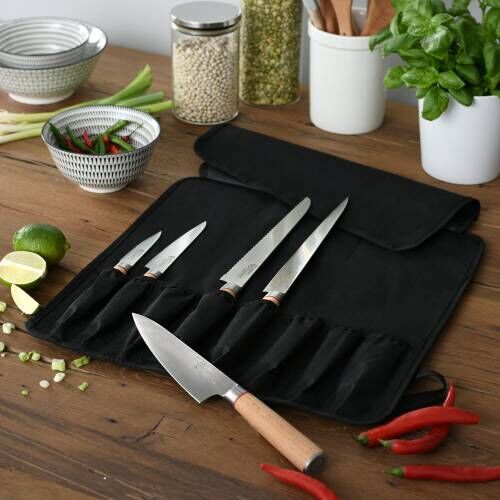
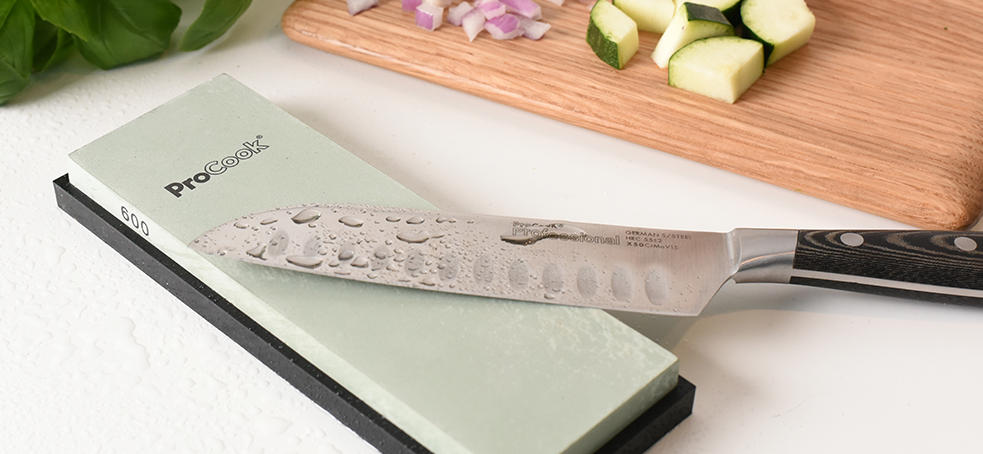


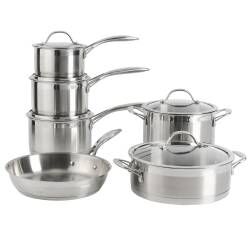
 Electricals
Electricals
 Coffee
Coffee
 Mixers and Blenders
Mixers and Blenders
 Kettles and Toasters
Kettles and Toasters
 Cooking
Cooking
 Small Appliances
Small Appliances
 Cookware & Bakeware
Cookware & Bakeware
 Pots and Pans
Pots and Pans
 Speciality Cookware
Speciality Cookware
 Baking
Baking
 Roasting
Roasting
 Knives
Knives
 Knife Sets
Knife Sets
 Single Knives
Single Knives
 Knife Accessories
Knife Accessories
 Tableware
Tableware
 Single Items
Single Items
 Serveware
Serveware
 Table Accessories
Table Accessories
 Outdoor Dining
Outdoor Dining
 Drinkware
Drinkware
 Hot Drinkware
Hot Drinkware
 Cafetieres and Teapots
Cafetieres and Teapots
 Drink Accessories
Drink Accessories
 Accessories
Accessories
 Kitchen Utensils
Kitchen Utensils
 Tools and Gadgets
Tools and Gadgets
 Storage
Storage
 Cleaning
Cleaning
 Summer desserts and baking
Summer desserts and baking
 Offers
Offers
 Clearance
Clearance
 Gifting
Gifting
